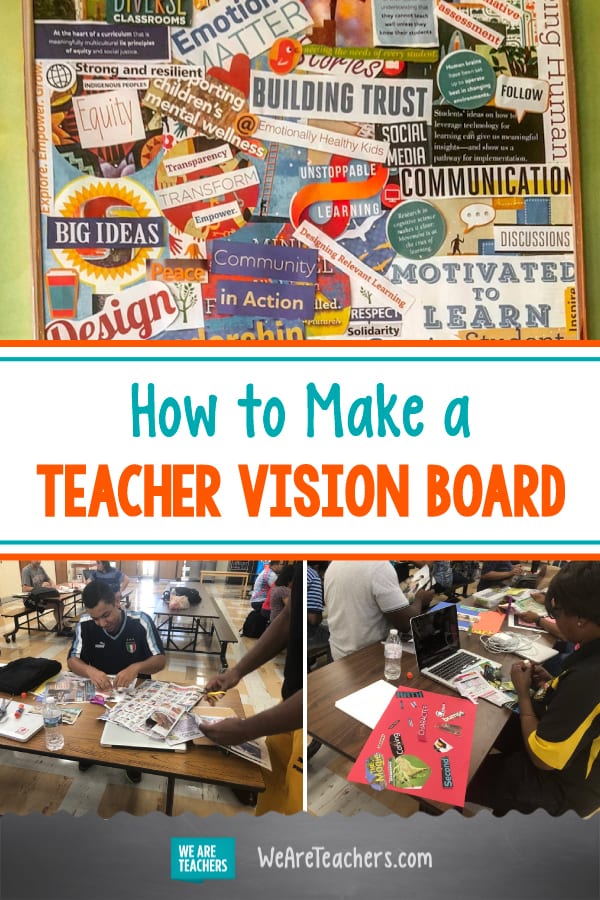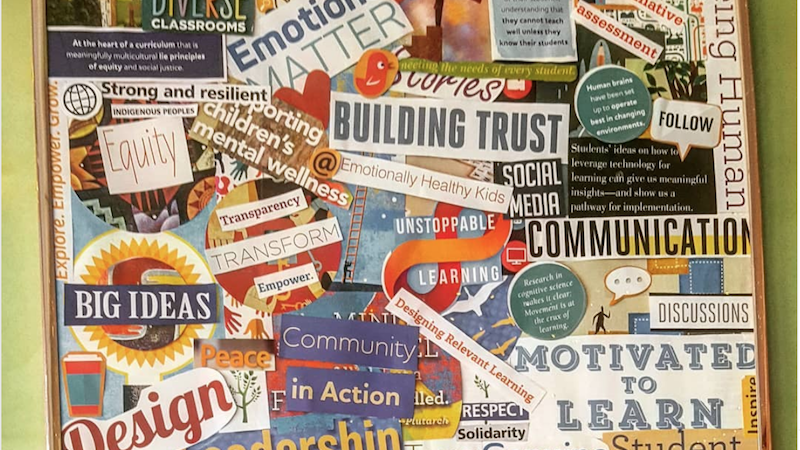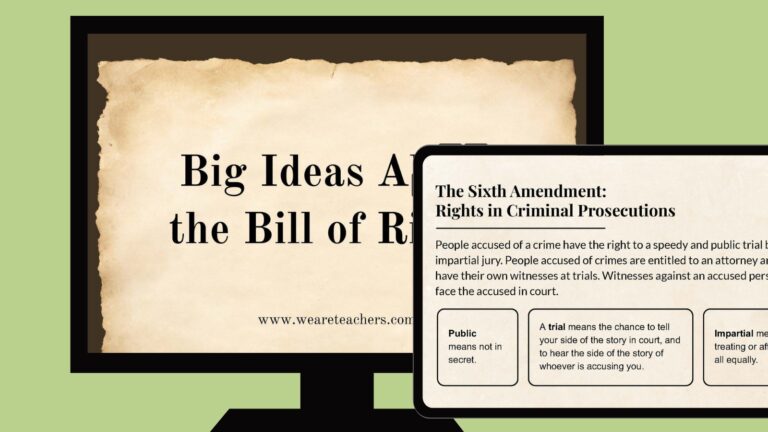Summer is the perfect time to engage in deep reflection about your teaching practice. You’ve had a few weeks to catch your breath, relax, and replenish your energy, and there is still a respectable amount of time before you have to dive back in.
Taking time to reflect on what went well in the past and what you want for the future is an integral part of professional growth. While you’re reflecting, why not try a fun and creative project to help you solidify your intentions—a teacher vision board?
Think of a vision board as a creative road map to your dreams, aspirations, and desires—a tangible representation to keep you focused on your goals. And the great thing is, there is no right or wrong way to do it. Every person’s vision board is, by design, deeply personal and perfectly unique.
Here are a few tips to help you get started.
Top image credit: @rpg.teach on Instagram
1. Think big picture.
What are your professional hopes and dreams? How do you want to evolve as a professional educator? More than likely you’ve invested loads of time, money, and effort to get where you are. Focus on your true desires—where do you want to go next? If it’s your intention to be in this profession for the long run, you have to step back every now and then and tweak your master plan.
[contextly_auto_sidebar]
2. Clarify your intentions and set goals.
What is your Vision and how does it relate to our school vision. Teachers created their own Vision Boards. #InspireInfluenceImpact #OneTeamOneGoal# #Trusttheprocess @DCLeads4Change @drhelencoley pic.twitter.com/WQa0gBcCn8
— Michelle Monroe (@MonroePrincipal) August 28, 2018
Now, time to narrow your focus. Get quiet and reflect on the past school year. What worked really well? What would you do differently? Be specific. Do you want your classroom environment to look and feel different? Do you want to deepen relationships with your students and/or colleagues? Are you interested in a leadership role?
Setting goals and taking specific action to achieve them is what it takes to make the impossible possible. In fact, studies show that if you take the time to create a clear intention for your future and write down your goals, you are 42 percent more likely to achieve those goals.
3. Dream big but don’t get overwhelmed.
Try to narrow down your actionable goals to three or four areas. More than likely your practice doesn’t need a complete overhaul, and you’re more likely to see progress if you focus your energy on your top priorities. Usually, as part of a district’s evaluation process, teachers are required to submit a professional improvement plan. Think of your vision board as an extension of your improvement plan but on a more personal level.
4. Focus on your feelings.
2day, in prep for next year, teachers submitted Vision Boards. Representative of their own professional goals and hopes for the future of @LetoHighSchool, these boards and our teachers' visions will, ultimately, determine our trajectory! @HCPSArea2 @Jeff_Eakins @HarrisonPeters pic.twitter.com/WQXS1hf2YA
— Larissa McCoy (@LHSMcCoy) April 2, 2018
Now, time to narrow your focus. Get quiet and reflect on the past school year. What worked really well? What would you do differently? Be specific. Do you want your classroom environment to look and feel different? Do you want to deepen relationships with your students and/or colleagues? Are you interested in a leadership role?
5. Be creative and have fun!
Now for the actual process. To create your vision board, all you need is a poster board, magazines, scissors, and a glue stick. You’re basically creating a giant collage, but a very focused collage with a very specific purpose.
Pick a serene work place where you can focus on being inspired. Play your favorite music in the background, have a cup of tea (or a glass of wine!) handy, then page through the magazines looking for words, titles, and pictures that match your vision. Cut them out and paste them onto your poster board however you like. Remember you’re not aiming for perfection—you’re looking to produce a vision board that is meaningful to you personally. So focus on engaging in the process more than on the final product.
6. Give your vision board high visibility.
Residents of #DC #Cohort2016 hard at work creating Vision Boards of the type of teacher they want 2 B #UrbanTeachers pic.twitter.com/29n8hhiTpE
— City Teaching Alliance (@cityteachingall) July 6, 2016
After you’ve completed your vision board, you’ll need to find the perfect place to display it. Think about it: The more often you see and think about what you want, the more you will focus on opportunities to meet your goals. And your vision board is the perfect reminder of your top priorities. It will help you stay the course and keep moving in the right direction. One teacher I know creates a vision board every summer, but instead of using poster board, she creates two 8-1/2 x 11–inch sheets that she uses as the front and back covers for her planning binder—something she uses practically all day.
Have you ever created a teacher vision board? Come share how it made a difference for you in our WeAreTeachers HELPLINE! Facebook group.
Plus, back-to-school resolutions for teachers.


